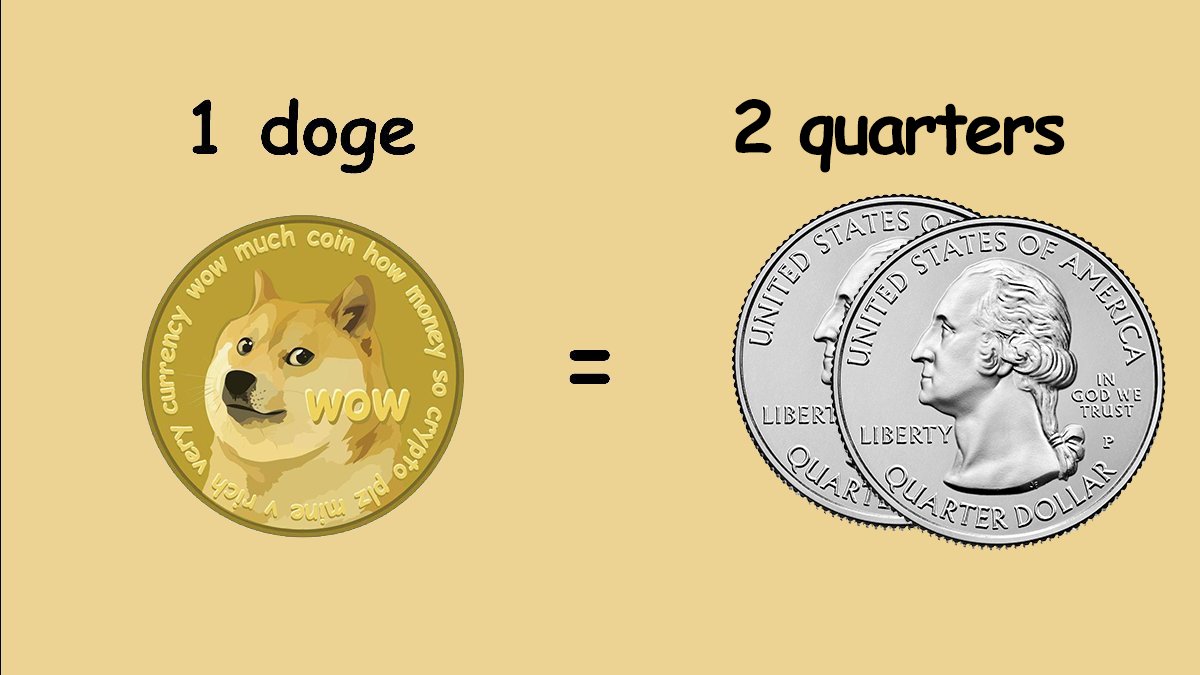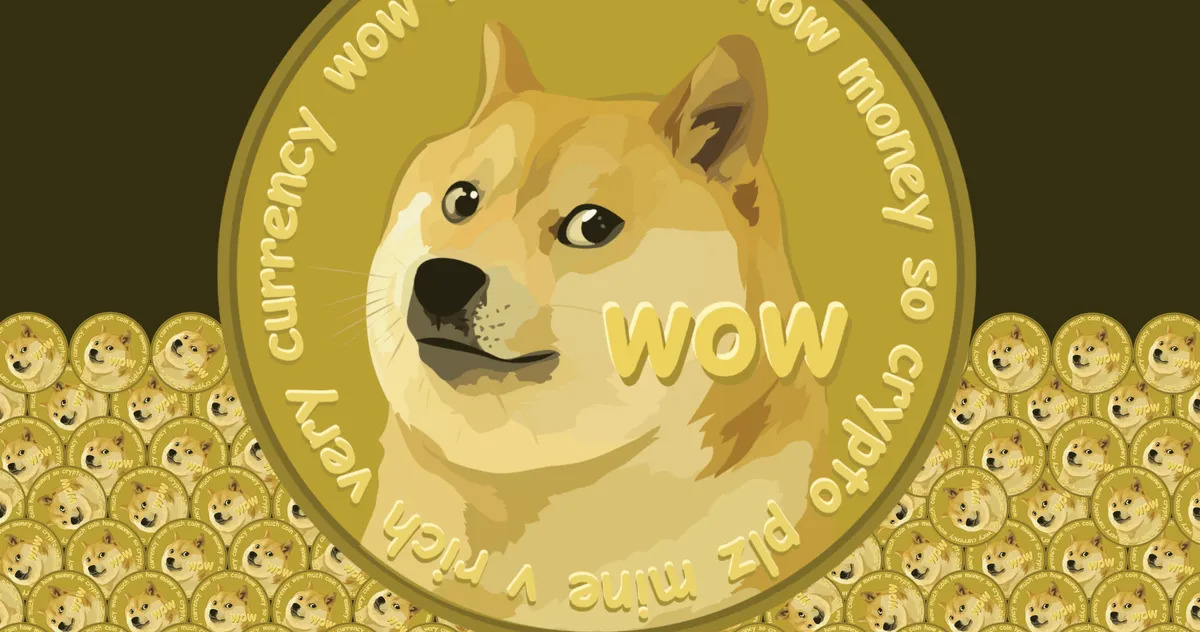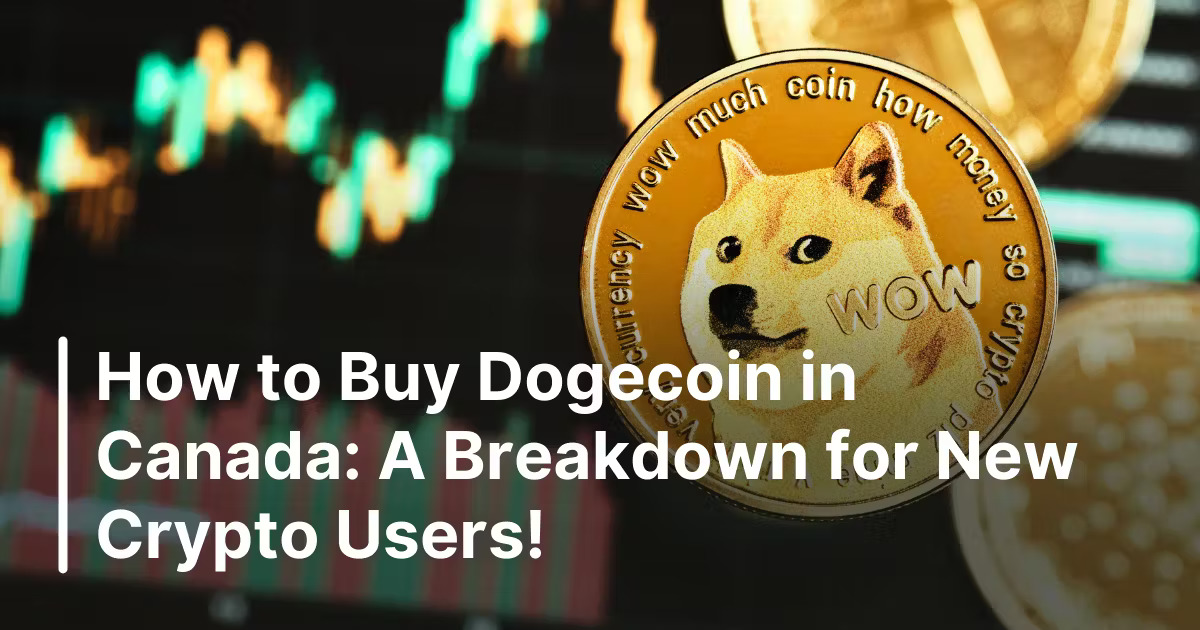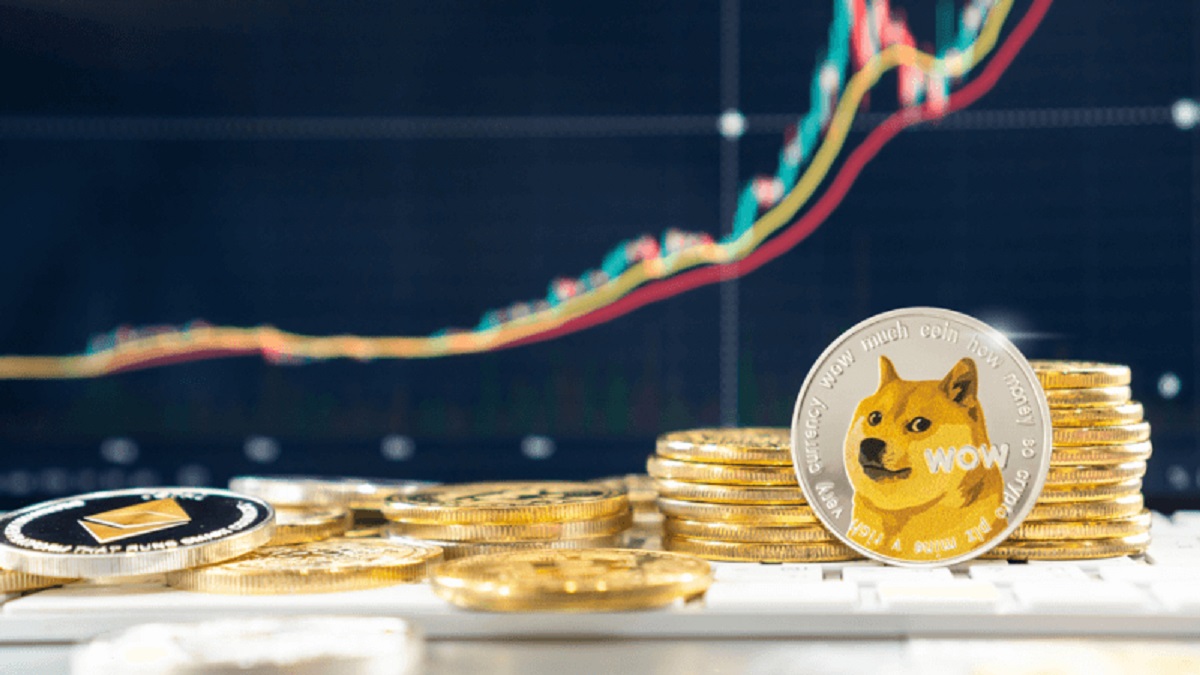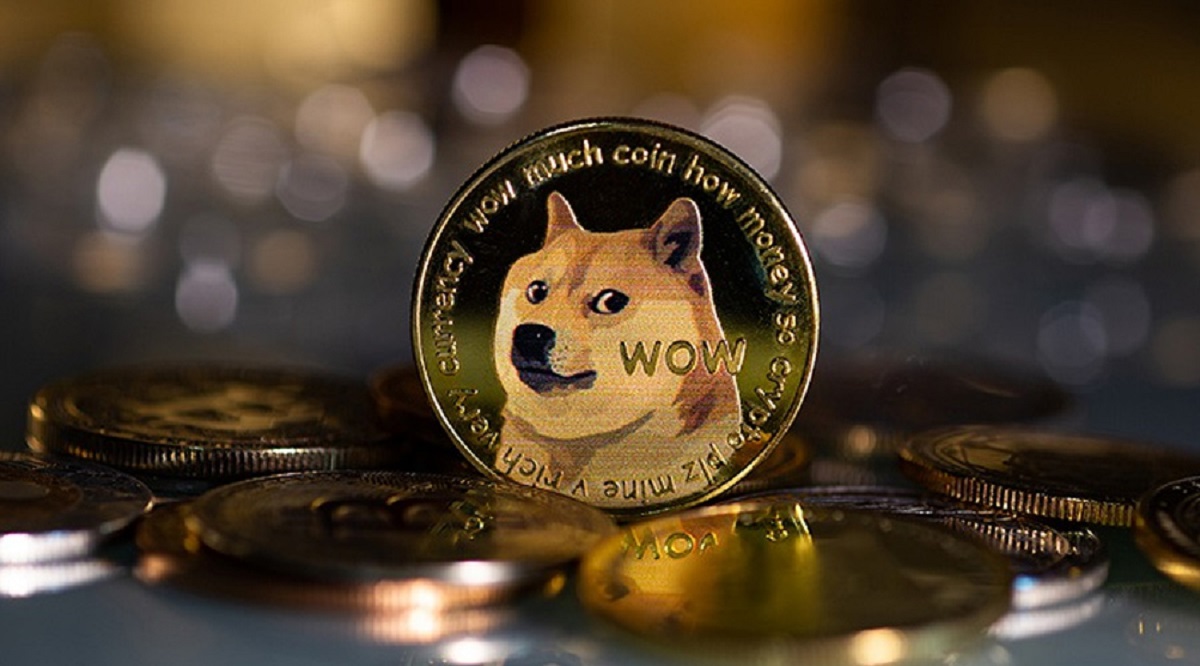Introduction
Welcome to the world of Dogecoin, a cryptocurrency that has gained significant attention and popularity in recent years. Whether you are a crypto enthusiast or new to the world of digital currencies, understanding the value of Dogecoin is essential. In this article, we will explore what Dogecoin is, its rise in the cryptocurrency market, the factors influencing its value, how to determine the value of one Dogecoin, and more.
Dogecoin was initially introduced as a meme cryptocurrency in 2013, created by software engineers Billy Markus and Jackson Palmer. It features the Shiba Inu dog from the “Doge” meme as its logo, giving it a fun and lighthearted identity.
Despite its origins as a joke, Dogecoin has managed to gain a loyal following and has become known for its active and supportive community. It has also gained attention from high-profile individuals, including Elon Musk, who have given it further exposure in the mainstream media.
As with any cryptocurrency, the value of Dogecoin is subject to market forces and fluctuates based on various factors. Understanding these factors can help investors and enthusiasts make informed decisions regarding their participation in the Dogecoin market.
In the following sections, we will delve deeper into the specifics of Dogecoin’s value and explore how you can determine the worth of one Dogecoin. Whether you are looking to invest, trade, or simply satisfy your curiosity, this article will provide you with the information you need to navigate the world of Dogecoin and its ever-changing value.
What is Dogecoin?
Dogecoin is a digital currency, often referred to as a cryptocurrency, that was created in December 2013. It is based on the popular “Doge” meme featuring the Shiba Inu dog, which quickly gained traction on the internet. Although it started as a joke, Dogecoin has since evolved into a legitimate cryptocurrency with a dedicated community.
Similar to other cryptocurrencies, Dogecoin operates on a decentralized network called a blockchain. This means that transactions are recorded on a public ledger, making them secure and transparent.
One distinct feature of Dogecoin is its friendly and inclusive community, known for its charitable efforts. Dogecoin supporters have engaged in numerous fundraising campaigns, donating to causes such as disaster relief, education, and even sponsoring sports teams. This community spirit has further contributed to the popularity and widespread adoption of Dogecoin.
Another key aspect of Dogecoin is its inflationary supply. Unlike most cryptocurrencies that have a fixed supply limit, Dogecoin releases a fixed amount of coins into circulation every year. This inflationary model helps prevent hoarding and encourages the use of Dogecoin as a medium of exchange.
Dogecoin gained significant attention in 2021 when high-profile figures such as Elon Musk and various online communities started discussing and promoting it. This surge in popularity led to a notable increase in its value and trading volume.
Overall, Dogecoin embodies the fun and lighthearted spirit of the internet, making it a unique and beloved cryptocurrency. Whether it remains a niche currency or continues to gain further acceptance and recognition remains to be seen, but its impact on the world of digital currencies is undoubtedly significant.
The Rise of Dogecoin
The rise of Dogecoin has been nothing short of remarkable. What started as a meme cryptocurrency with little to no value has now become a prominent player in the digital currency market. Let’s explore how Dogecoin gained momentum and captured the attention of investors and enthusiasts alike.
One of the key factors that led to the rise of Dogecoin is its strong and supportive community. From the very beginning, Dogecoin attracted a passionate group of individuals who embraced its fun and lighthearted nature. This community actively engaged in online forums and social media platforms, helping to spread awareness and foster a sense of camaraderie.
But it wasn’t until early 2021 that Dogecoin experienced a sudden surge in popularity. This can be attributed to several influential figures, most notably Elon Musk. The Tesla CEO and billionaire entrepreneur began tweeting about Dogecoin, posting memes and expressing his support for the cryptocurrency. His tweets had a profound impact on the market, causing the value of Dogecoin to skyrocket and generating widespread media coverage.
Furthermore, online communities such as Reddit’s r/WallStreetBets also played a significant role in the rise of Dogecoin. These communities, known for their influence in the stock market, started discussing and promoting Dogecoin as a viable investment opportunity. This led to a massive influx of new investors and traders looking to capitalize on the potential gains.
Amidst the hype and frenzy, it’s important to note that the rise of Dogecoin also comes with inherent risks. Cryptocurrencies, including Dogecoin, are highly volatile assets, with prices capable of experiencing dramatic fluctuations in short periods. This volatility can provide lucrative opportunities for traders, but it also means that investors should exercise caution and thoroughly research before getting involved.
As with any investment, it is essential to consider the risks and potential rewards before allocating funds to Dogecoin. While its rise in popularity and positive sentiment from influential figures have undoubtedly contributed to its success, market dynamics can change rapidly. It’s crucial to stay informed, monitor market trends, and make well-informed decisions when it comes to investing in Dogecoin or any other cryptocurrency.
In the next sections, we will delve deeper into the factors that impact Dogecoin’s value, how to determine the worth of one Dogecoin, and other essential aspects to consider before getting involved in the Dogecoin market.
Factors Affecting Dogecoin’s Value
The value of Dogecoin, like any other cryptocurrency, is influenced by various factors that impact supply and demand dynamics. Understanding these factors can help investors and enthusiasts assess the potential future value of Dogecoin. Here are some of the key factors that affect Dogecoin’s value:
1. Market Sentiment: The overall sentiment surrounding cryptocurrencies, including Dogecoin, can greatly impact its value. Positive sentiments, such as endorsements from influential figures or increased media coverage, can lead to a surge in demand and drive up the price. Conversely, negative sentiment or regulatory concerns can lead to a decrease in value.
2. Adoption and Awareness: The level of adoption and awareness of Dogecoin plays a significant role in determining its value. As more businesses and individuals start accepting Dogecoin as a form of payment, it increases its utility and demand, which can contribute to its value growth.
3. Technological Developments: New technological advancements or upgrades to the Dogecoin network can have an impact on its value. Improvements in scalability, security, and functionality can enhance the overall appeal of Dogecoin and attract more users and investors.
4. Competition: The presence of competing cryptocurrencies can affect Dogecoin’s value. If a new cryptocurrency gains traction and offers better features or innovation, it may divert users and investors away from Dogecoin, thereby affecting its demand and value.
5. Regulatory Environment: Regulatory actions and policies regarding cryptocurrencies can influence their value. Positive regulations that provide clarity and legitimacy to the cryptocurrency market can boost investor confidence and drive up the value of Dogecoin. Conversely, negative or uncertain regulatory environments can create volatility and impact its value negatively.
6. Overall Market Conditions: The general state of the cryptocurrency market can influence the value of Dogecoin. Factors such as market trends, overall investor sentiment, and macroeconomic conditions can impact the demand for cryptocurrencies as a whole, subsequently affecting the value of Dogecoin.
It’s important to note that these factors are interconnected and can influence each other. For example, positive market sentiment and increased adoption can reinforce each other, leading to a positive feedback loop that drives up Dogecoin’s value. Similarly, negative news or market conditions can create a downward spiral.
While these factors provide insights into what affects Dogecoin’s value, predicting its future value with certainty is challenging. The cryptocurrency market is highly volatile, and prices can fluctuate rapidly. It’s crucial to conduct thorough research, stay updated on market trends, and assess the overall risk and reward before making any investment decisions related to Dogecoin.
How to Determine the Value of One Dogecoin
Determining the value of one Dogecoin involves considering several factors, including market dynamics, trading volume, and supply and demand. While the exact value of Dogecoin at any given moment is influenced by real-time market conditions, here are some key considerations to help you understand how the value of one Dogecoin is determined:
1. Market Exchange: The value of one Dogecoin can be determined by looking at its exchange rate on various cryptocurrency trading platforms. The exchange rate represents the price at which Dogecoin can be bought or sold in relation to other cryptocurrencies or fiat currencies, such as the US dollar or Euro.
2. Trading Volume: The trading volume is the total number of Dogecoins being bought and sold within a specific timeframe. Higher trading volumes indicate a more active market and can contribute to increased liquidity, which may influence the value of one Dogecoin.
3. Supply and Demand: The concept of supply and demand plays a crucial role in determining the value of Dogecoin. If there is high demand and limited supply, the value is likely to increase. Conversely, if there is low demand and an abundance of supply, the value may decrease.
4. Market Capitalization: The market capitalization of Dogecoin refers to the total value of all Dogecoins in circulation. It is calculated by multiplying the current price of one Dogecoin by the total number of coins in circulation. A higher market capitalization generally indicates a higher value for one Dogecoin.
5. Overall Market Conditions: The broader cryptocurrency market conditions can impact the value of one Dogecoin. Factors like market trends, shifts in investor sentiment, and macroeconomic factors can influence the demand for cryptocurrencies, including Dogecoin, thereby affecting its value.
It’s important to note that the value of one Dogecoin can change rapidly due to the highly volatile nature of the cryptocurrency market. Factors such as market news, regulatory updates, and even social media trends can lead to sudden price fluctuations.
Keep in mind that determining the exact value of one Dogecoin can be challenging, as it is influenced by a multitude of factors and is constantly evolving. Traders and investors often use technical analysis, fundamental analysis, and market indicators to assess the value and make informed decisions.
It’s crucial to conduct thorough research, stay updated on market trends, and use reliable cryptocurrency exchanges or trusted sources to gather accurate information on Dogecoin’s value. This will help you make more informed decisions when it comes to buying, selling, or holding Dogecoin.
Current Price of Dogecoin
As of the time of writing, Dogecoin is being traded at a price of [current price]. However, it’s important to note that the price of Dogecoin is highly volatile and can change rapidly due to market conditions and investor sentiment.
To get the most accurate and up-to-date price of Dogecoin, it is recommended to check reputable cryptocurrency exchanges or financial websites that provide real-time data. These platforms display the current market price at which Dogecoin is being bought and sold.
The price of Dogecoin is typically quoted in relation to other cryptocurrencies or fiat currencies, such as the US dollar or Euro. The exchange rate between Dogecoin and these currencies helps determine the value of one Dogecoin.
Keep in mind that the price of Dogecoin may vary slightly between different exchanges due to factors such as trading volume, liquidity, and geographical restrictions. It’s important to consider these factors and choose a reliable and reputable exchange when buying or selling Dogecoin.
Additionally, it’s worth mentioning that the price of Dogecoin can be influenced by various factors, including market sentiment, overall cryptocurrency market conditions, news, and regulatory developments. These factors can lead to sudden price fluctuations and should be taken into account when assessing the current price of Dogecoin.
When monitoring the current price of Dogecoin, it’s important to have a long-term perspective and consider the underlying value and fundamentals of the cryptocurrency. Price volatility is inherent in the cryptocurrency market, and short-term price movements may not always reflect the true value or potential of Dogecoin.
To stay updated on the current price of Dogecoin, it’s advisable to use cryptocurrency tracking apps, financial news outlets, or reputable cryptocurrency exchanges that provide real-time price data. This will help you make informed decisions when it comes to buying, selling, or trading Dogecoin based on the most up-to-date market information available.
Historical Price Trends of Dogecoin
Over its existence, Dogecoin has experienced significant price fluctuations and has undergone several notable price trends. In this section, we will explore some of the key historical price trends of Dogecoin, highlighting its volatility and the potential for both significant gains and losses.
When Dogecoin was first introduced in 2013, its value initially remained relatively low. However, in early 2014, the price of Dogecoin saw a sharp increase, driven by the growing popularity of cryptocurrencies and the active community surrounding Dogecoin. During this time, Dogecoin gained attention for its charitable fundraising efforts and garnered a loyal following.
Between 2014 and 2017, Dogecoin experienced various price fluctuations but generally maintained a relatively stable value. However, the cryptocurrency market as a whole experienced a significant surge in late 2017, and Dogecoin was not exempt from this trend.
In December 2017, Dogecoin witnessed a massive price rise, with its value reaching an all-time high. This increase was largely fueled by the overall market hype and enthusiasm, as well as the adoption of Dogecoin by a broader audience outside of its core community. However, following this peak, the price of Dogecoin underwent a significant correction, reflecting the volatile nature of the cryptocurrency market.
Following the correction, Dogecoin experienced a period of relatively stable prices, with occasional minor fluctuations. However, the cryptocurrency market as a whole entered a bear market in 2018, and Dogecoin was not immune to the downward trend. Its value decreased significantly during this period, reflecting the broader market sentiment.
In recent years, Dogecoin’s price has once again captured attention due to notable events and endorsements. The year 2021 saw a dramatic increase in Dogecoin’s value, largely driven by the influence of high-profile figures, social media trends, and online communities. Positive sentiment, such as endorsements from Elon Musk and discussions on platforms like Reddit’s r/WallStreetBets, propelled Dogecoin’s price to unprecedented levels.
However, it’s essential to note that this price increase was accompanied by significant volatility. Dogecoin’s value experienced rapid fluctuations, reflecting the speculative nature of the market and the influence of short-term market sentiment.
As with any investment, understanding the historical price trends of Dogecoin provides valuable insights, but it’s crucial to approach the market with caution. The cryptocurrency market can be highly unpredictable, and past performance is not indicative of future results. It is advisable to conduct thorough research, stay informed about market trends, and consider your risk tolerance and investment goals before making any decisions related to Dogecoin or any other cryptocurrency.
Dogecoin’s Market Capitalization
Market capitalization is a crucial metric used to assess the overall value and size of a cryptocurrency. It represents the total worth of a cryptocurrency based on its current price and the total number of coins in circulation. Dogecoin, with its large supply and active trading, has gained notable market capitalization over the years.
Dogecoin’s market capitalization is calculated by multiplying the current price of one Dogecoin by the total number of coins in circulation. The total supply of Dogecoin is considerably higher compared to some other cryptocurrencies, which leads to a larger market capitalization when the price rises.
Dogecoin’s unique inflationary supply model, which releases a fixed amount of new coins into circulation every year, can impact its market capitalization. The continuous release of new coins affects the rate at which Dogecoin’s market capitalization grows.
Historically, Dogecoin’s market capitalization has experienced significant fluctuations in line with its price movements. During periods of increased demand and positive market sentiment, Dogecoin’s market capitalization tends to rise, reflecting the increased valuation of all the Dogecoins in circulation.
It’s important to note that market capitalization is just one metric to consider when assessing the value and potential of a cryptocurrency like Dogecoin. While a higher market capitalization generally indicates a larger scale and popularity, it does not guarantee future performance or stability.
Dogecoin’s market capitalization has seen notable growth in recent years, especially during periods of increased investor interest and positive market sentiment. However, it’s crucial to approach market capitalization figures with caution and consider other factors such as trading volume, price trends, technology developments, and overall market conditions.
Whether Dogecoin’s market capitalization will continue to rise, stabilize, or decline depends on various factors, including further adoption, market dynamics, and the cryptocurrency industry as a whole. It’s important to stay informed, conduct thorough research, and carefully analyze these factors when evaluating Dogecoin or any other cryptocurrency for investment purposes.
Factors to Consider Before Investing in Dogecoin
Investing in Dogecoin, like any other investment, requires careful consideration and evaluation of several factors. While Dogecoin has gained popularity and attention, it’s essential to assess these factors before making any investment decisions. Here are some key factors to consider:
1. Risk Tolerance: Cryptocurrencies, including Dogecoin, are highly volatile and can experience significant price fluctuations. Before investing, consider your risk tolerance and how comfortable you are with potential losses.
2. Market Understanding: Gain a thorough understanding of the cryptocurrency market in general and Dogecoin’s market specifically. Stay informed about market trends, news, and developments to make informed investment decisions.
3. Long-Term Strategy: Determine your investment goals and time horizon. Consider whether you’re looking for short-term gains or are willing to invest for the long term. Cryptocurrency markets can be highly volatile, so having a clear strategy in mind is essential.
4. Research: Conduct thorough research on Dogecoin, its technology, use case, and potential future developments. Understand the underlying value proposition and evaluate whether it aligns with your investment goals.
5. Market Volatility: Be aware of the inherent volatility of the cryptocurrency market. Prices can fluctuate rapidly and dramatically. Consider how you would handle market downturns and whether you have a strategy in place to mitigate losses.
6. Regulatory Factors: Regulatory developments can impact the cryptocurrency market, including Dogecoin. Stay informed about any relevant regulations or changes that may affect the legal status and acceptance of cryptocurrencies in your jurisdiction.
7. Diversification: Avoid putting all your investment capital into a single cryptocurrency. Diversify your portfolio by considering other assets and investment opportunities. This helps spread the risk and reduce the potential impact of volatility on your investments.
8. Technical Analysis: Consider using technical analysis to assess historical price trends, support and resistance levels, and other market indicators. Technical analysis can provide insights into market sentiment and potential future price movements.
9. Security: Take necessary precautions to secure your digital assets. Use reputable cryptocurrency exchanges, implement strong security measures, such as two-factor authentication, and store your cryptocurrencies in secure wallets.
10. Professional Advice: If you’re unsure about investing in Dogecoin or the cryptocurrency market, consider seeking professional financial advice. A financial advisor or investment professional can provide guidance tailored to your individual circumstances and goals.
Remember, investing in Dogecoin or any other cryptocurrency carries risks. It’s essential to evaluate the factors listed above and only invest what you can afford to lose. Keep in mind that markets can be unpredictable, and past performance is not indicative of future results. Stay informed, exercise caution, and make informed decisions when it comes to investing in Dogecoin.
Conclusion
Understanding the value of Dogecoin is crucial for investors, traders, and enthusiasts in the cryptocurrency market. Dogecoin, which started as a meme cryptocurrency, has gained significant attention and popularity over the years. Its rise in value and adoption can be attributed to various factors, including its supportive community, influential endorsements, and market dynamics.
Factors such as market sentiment, adoption, technological developments, competition, regulatory environment, and overall market conditions can impact the value of Dogecoin. Determining the value of one Dogecoin involves considering market exchange rates, trading volume, supply and demand dynamics, and overall market sentiment.
While it’s important to monitor the current price and historical trends of Dogecoin, it’s equally important to conduct thorough research, assess risk tolerance, and consider other factors before investing. The cryptocurrency market is highly volatile, and prices can fluctuate rapidly. Having a clear investment strategy, understanding market dynamics, and staying informed are essential for making informed decisions.
Investing in Dogecoin, or any other cryptocurrency, requires careful consideration of factors such as risk tolerance, market understanding, long-term strategy, research, market volatility, regulatory factors, diversification, security, and seeking professional advice when needed.
As the cryptocurrency market continues to evolve, it’s important to stay informed, remain cautious, and adapt investment strategies accordingly. The value of Dogecoin, like any other cryptocurrency, is subject to market forces and can change rapidly. By staying informed and conducting thorough research, investors can make better-informed decisions that align with their investment goals and risk tolerance.
Remember, investing in cryptocurrencies carries risks, and past performance is not indicative of future results. It’s important to make investment decisions based on personal circumstances, risk tolerance, and careful evaluation of the factors outlined in this article. With a thoughtful and informed approach, investors can navigate the world of Dogecoin and potentially benefit from its opportunities while managing the associated risks.







